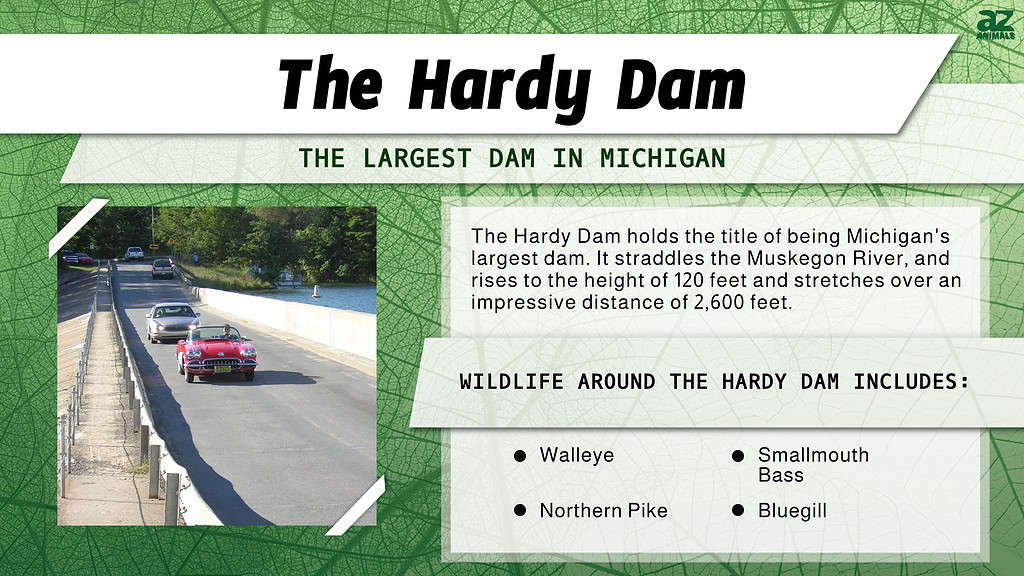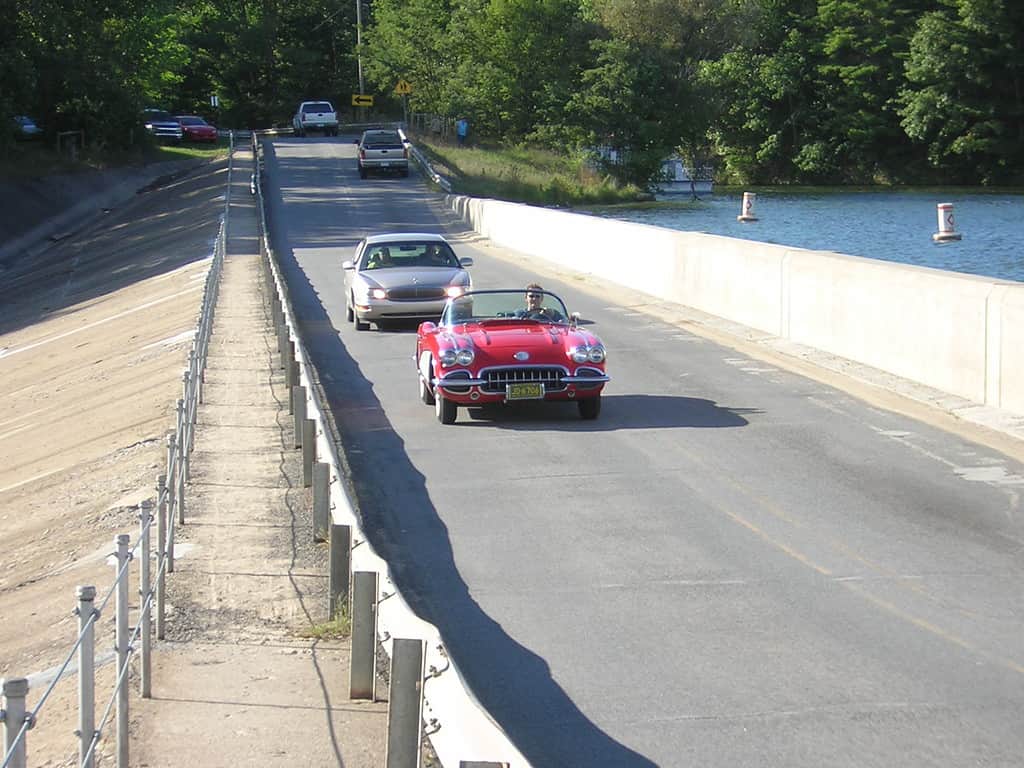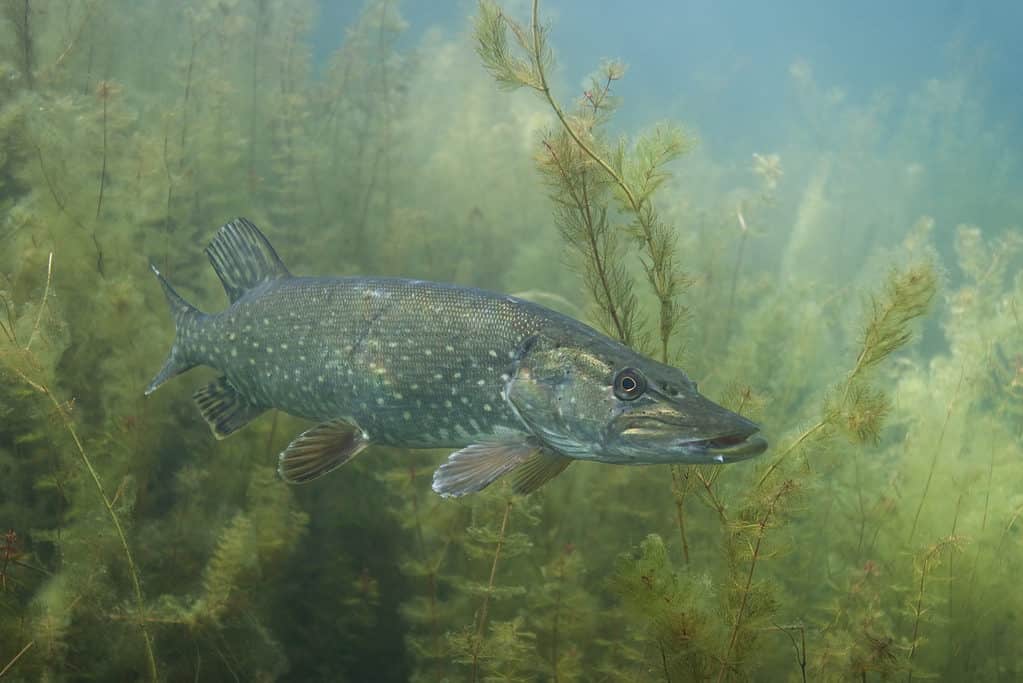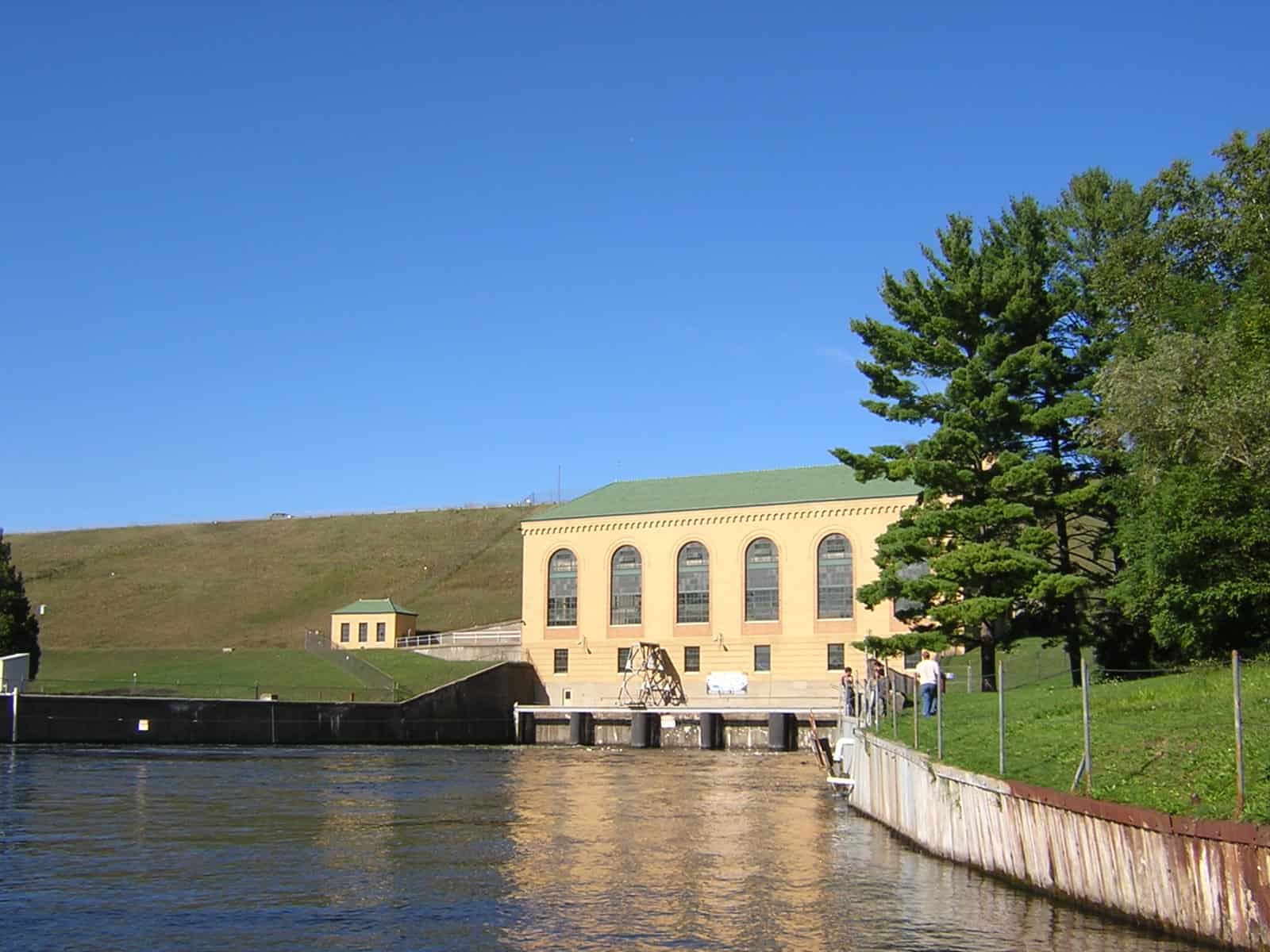
Welcome to the world of Michigan’s dams. A fascinating blend of engineering marvels and natural wonders nestled within the picturesque landscapes of the Great Lakes State. These magnificent structures not only harness the power of water for energy but also provide vital flood control and support thriving ecosystems.
As we embark on an exciting journey to uncover the hidden stories behind these dams, we invite you to join us in discovering the largest dam in Michigan. Showcasing captivating aquatic life that thrives in the waters behind it.
In addition, we dive into the compelling history, impressive design, and multifaceted impact of Hardy Dam. We’ll also explore the surrounding wildlife and recreational opportunities, as well as ponder the consequences of a potential dam breach.
So, buckle up and get ready for an exciting journey through the story.
The Largest Dam in Michigan
Hardy Dam is Michigan’s largest dam. This engineering marvel holds a special place in the hearts of Michiganders. It has an essential role in the state’s development.

With one foot in Newaygo County and the other in Mecosta County, the dam creates a harmonious blend of utility and breathtaking scenery.
©Dual licensed under GFDL and Creative Commons Attribution 2.5 (CC-BY 2.5) – Original / License
Location
Nestled between lush landscapes and meandering waterways, the dam’s location paints a stunning backdrop for its story.
At the heart of Michigan’s natural beauty, Hardy Dam straddles the mighty Muskegon River. With one foot in Newaygo County and the other in Mecosta County, the dam creates a harmonious blend of utility and breathtaking scenery.
The Muskegon River Connection
As the second-longest river in Michigan, the Muskegon River plays a crucial role in the state’s ecosystem. Hardy Dam harnesses the river’s power, transforming its flowing waters into a valuable resource for Michigan’s residents and wildlife.
Dimensions
Standing tall at 120 feet and stretching over 2,600 feet, Hardy Dam’s impressive dimensions are a testament to the ambition and skill of its creators. This behemoth structure tames the Muskegon River with a robust and imposing presence.
Designed to handle Mother Nature’s unpredictable moods, the dam’s spillway boasts a capacity of 61,000 cubic feet per second. This remarkable feature ensures that Hardy Dam can manage even the most torrential downpours with ease.
Power Generation
At the core of Hardy Dam’s purpose is its hydroelectric plant. It is a powerhouse that transforms the river’s flow into clean, renewable energy. The plant is a shining example of sustainable energy production, providing a vital resource for Michigan.
Hardy Dam’s hydroelectric plant is not lightweight, with an installed capacity of 31.5 megawatts. This formidable output powers thousands of homes, fueling Michigan’s communities with a reliable, eco-friendly energy source.
History of Hardy Dam
From its early development to the milestones that shaped its legacy, let’s explore the narrative of this engineering marvel.

Over three grueling years, dedicated workers toiled tirelessly to bring the dam to life, finally completing the monumental task in 1931.
©Dual licensed under GFDL and Creative Commons Attribution 2.5 (CC-BY 2.5) – Original / License
Background and Early Development
Once upon a time, in the early 20th century, Michigan’s booming industries yearned for a reliable power source. Enter the visionary engineers who dreamed up Hardy Dam, a hydroelectric powerhouse designed to meet the state’s growing demands.
Construction Timeline
The clock struck 1929, and the construction of Hardy Dam commenced. Over three grueling years, dedicated workers toiled tirelessly to bring the dam to life. They finally reached completion of this monumental task in 1931.
Key Milestones and Events
As the years rolled on, Hardy Dam stood strong, overcoming challenges and reaching new heights. From its inauguration to the expansion of its hydroelectric capacity and the development of surrounding recreational areas, Hardy Dam has continued to impact Michigan and its residents.
Design and Construction: How It Was Built
It’s time to delve into the heart of Hardy Dam: its design and construction. Let’s explore the innovative minds and techniques that brought this colossal structure to life, standing as a testament to human creativity and determination.
Ambursen Hydraulic Construction Company
The masterminds behind Hardy Dam, the Ambursen Hydraulic Construction Company, brought their expertise to the project. With a reputation for excellence, they successfully tackled the ambitious endeavor, crafting a dam that would stand the test of time.
The Ambursen-Type Design
A stroke of genius, the Ambursen-type design revolutionized dam construction. Hardy Dam’s unique flat-slab buttress design not only reduced material usage but also offered impressive strength and durability. This pioneering approach set the stage for future dams, cementing Hardy Dam’s place in engineering history.
Environmental Impact and Mitigation Measures
As we admire Hardy Dam’s achievements, it’s vital to consider its environmental footprint. So let’s explore the delicate balance between progress and preservation, delving into the dam’s impact on nature and the measures taken to protect our precious ecosystems.

Recognizing the importance of preserving aquatic life, fish passage facilities have been implemented at Hardy Dam.
©Martin Prochazkacz/Shutterstock.com
Effects on Water Quality and Fish Habitat
Though a powerhouse of renewable energy, Hardy Dam can affect water temperatures downstream. This change impacts the delicate balance of aquatic ecosystems. It requires close attention and care to minimize adverse effects on fish populations.
The mighty Muskegon River’s flow, tamed by the dam, experiences changes that can influence habitats and migration patterns. To safeguard the river’s inhabitants, careful management is essential to maintain the natural harmony of this vital waterway.
Measures Taken to Minimize Impacts
Recognizing the importance of preserving aquatic life, fish passage facilities have been implemented at Hardy Dam. These ingenious structures allow fish to navigate the altered waters, ensuring their migration remains unimpeded.
Vigilance is key in preserving the delicate balance of nature. Hardy Dam’s operators employ environmental monitoring programs to assess the dam’s impact on local ecosystems. They use the insights gained to adapt and improve their practices, thus ensuring a sustainable future for all.
What Lives in the Waters Behind the Dam
As we continue our exploration of Hardy Dam, let us turn our attention to the vibrant aquatic life that thrives within the waters behind it. Let’s embark on a journey to uncover the fascinating array of species that call these waters home. We are painting a mesmerizing underwater tableau.

The waters behind Hardy Dam also harbor a diverse community of native fish, including the state-threatened redhorse
sucker
.
©M Huston/Shutterstock.com
Fish Species
Let’s explore the captivating world of fish species thriving in the waters behind Hardy Dam.
- Popular Game Fish: Hardy Pond teems with sought-after game fish such as walleye, smallmouth bass, and northern pike. Anglers from far and wide flock to the dam to try toto reelin a trophy catch or simply enjoy a relaxing day on the water.
- Native Inhabitants: The waters behind Hardy Dam also harbor a diverse community of native fish, including the state-threatened redhorse sucker and the vibrant bluegill. These indigenous species play a vital role in maintaining a balanced ecosystem.
Aquatic Plants and Invertebrates
Let’s venture beyond the realm of fish and uncover the enchanting world of aquatic plants and invertebrates that reside in the waters behind Hardy Dam. These often overlooked organisms play a key role in maintaining a healthy and vibrant ecosystem.
- Submerged Greenery: Beneath the surface, a lush underwater garden flourishes, with aquatic plants like wild celery and coontail providing essential habitat for fish and invertebrates. These submerged green havens also help improve water quality by filtering pollutants and adding oxygen.
- Tiny but Mighty Inhabitants: In the nooks and crannies of Hardy Pond, countless invertebrates, such as snails, crayfish, and dragonfly larvae, scuttle and wriggle about. Though often overlooked, these small creatures are the unsung heroes of the aquatic ecosystem, serving as a crucial food source for larger species.
Importance of Biodiversity
Let’s delve into the significance of biodiversity in the waters behind Hardy Dam, recognizing the delicate balance and harmony that exists among the myriad species. Each organism, regardless of size or role, contributes to this aquatic paradise’s overall health and sustainability.
- Ecological Balance: The rich variety of life in the waters behind Hardy Dam is key to maintaining a healthy, vibrant ecosystem. Each species, big or small, plays a unique role in the intricate web of life, contributing to the overall balance and stability of this aquatic haven.
- Conservation and Awareness: Appreciating the biodiversity of Hardy Pond helps us understand the importance of conservation efforts and fosters a deeper connection with the natural world. By protecting and preserving this underwater realm, we ensure that future generations can also marvel at the wonders of life in the waters behind Hardy Dam.
Role in Flood Control and Water Management
Hardy Dam harnesses the power of water, safeguarding communities and ensuring the sustainable use of this precious resource.
Flood Control
When the skies unleash their fury, Hardy Dam’s flood control capabilities shine. By meticulously managing water levels and regulating the flow of the Muskegon River, the dam protects downstream communities from the ravages of flooding.
The backbone of Hardy Dam’s flood control prowess is its remarkable spillway system. Designed to release excess water during heavy rainfall, the spillway ensures that the dam remains a steadfast guardian against nature’s unpredictable tempests.
Water Management
Beyond flood control, Hardy Dam plays an essential role in water management. By carefully controlling the release of water, the dam provides a reliable source for irrigation, sustaining agriculture and guaranteeing a steady supply for nearby communities.
When Mother Nature tightens her grip and drought conditions loom, Hardy Dam’s water management capabilities become even more critical. By effectively storing and allocating water resources, the dam helps maintain a lifeline for ecosystems and communities during parched periods.
What Would Happen If Hardy Dam Ever Broke?
While Hardy Dam stands as a symbol of strength and resilience, it’s essential to consider the potential consequences of a breach. So let’s delve into the hypothetical scenario of a broken dam and examine the impact on the environment, economy, and communities downstream.
Environmental Consequences
A breach in Hardy Dam would unleash a torrent of water, altering the natural flow of the Muskegon River. The sudden change could wreak havoc on aquatic ecosystems, impacting fish populations and destabilizing the fragile balance of life beneath the surface.
The surge of water from a broken dam could inundate surrounding lands, destroying critical habitats for a diverse range of species. From mammals and birds to insects and plants, the loss of these environments would be a severe blow to the area’s biodiversity.
Economic Ramifications
With the dam’s hydroelectric plant crippled, the region would face the loss of a significant renewable energy source. This disruption could lead to increased energy costs and dependence on less environmentally friendly alternatives.
A massive release of water would likely cause extensive damage to downstream infrastructure and property. In addition, the financial burden of repairing or replacing these assets would be immense. It would entail structures such as roads, bridges, homes, and businesses.
Human Impact
The flooding caused by a dam breach could force communities downstream to evacuate, leaving them without homes or possessions. This displacement would have long-lasting social and emotional consequences for those affected.
In the event of a dam failure, a swift and comprehensive emergency response would be critical to ensuring public safety. In addition, the ability to evacuate, rescue, and support affected residents would be a test of the region’s preparedness and resources.
While the possibility of a breach at Hardy Dam is remote, contemplating the potential consequences helps reinforce the importance of diligent maintenance and preparedness measures.
Where is the Hardy Dam Located on a Map?
Found neatly tucked away in Big Prairie Township, Newaygo County, Michigan. The Hardy Dam is a powerplant complex and earth-filled embankment dam built on the Muskegon River. Notably, upon its construction, it held the distinction of being the largest earthen dam east of the Mississippi in North America. The resulting reservoir encompasses an extensive shoreline spanning over 50 miles.
Here is the Hardy Dam on a map:
Wrapping Up
And there you have it—a thrilling expedition through the incredible world of Hardy Dam! We’ve uncovered its rich history, marveled at its design, and acknowledged its significance for Michigan. We’ve also delved into the vital roles it plays in environmental protection, flood control, and power generation, as well as the captivating wildlife and recreation it fosters. While challenges lie ahead, it’s clear that the Hardy Dam remains a treasured asset for generations to come. So, let’s raise a toast to this engineering gem and its enduring impact on the Great Lakes State!
Thank you for reading! Have some feedback for us? Contact the AZ Animals editorial team.








